Poetry is a key component in our homeschool and has been from day one. When my daughter (now 19) and I began her homeschool journey, one of the first activities that we did was begin to memorize her first poem.
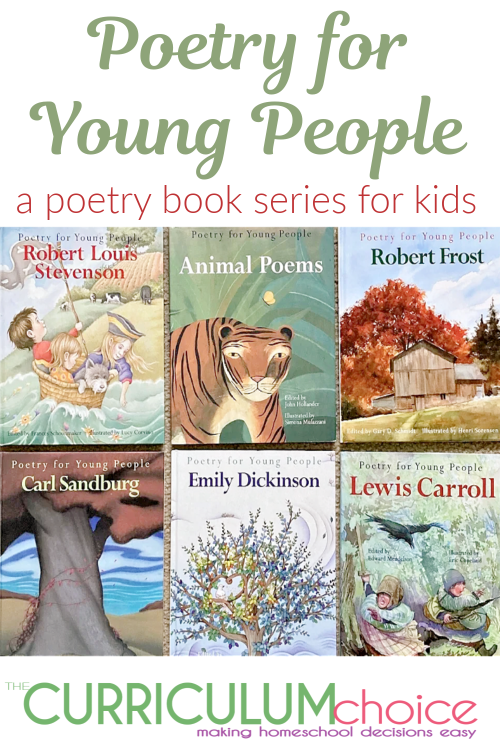
Poetry for Young People Series – A Review
The lesson plans (which I followed religiously of course) said to read and practice the first line of a four line stanza poem the first week. The next week we were to add line two and so on and so forth, until we reached the end of week four where she would beautifully recite the entire four line poem.
Well, she learned the whole thing the first day, yeah. So we ditched those lesson plans (not really) and just decided to enjoy poetry and learn as much or as little as we wanted to, when we wanted to, for as long as we wanted to. Easy as that!
Now that she’s a Sophomore in college and double-majoring in Dance and English, I am pretty sure our poetry studies cemented a love of words and their meanings in many different ways over the years.
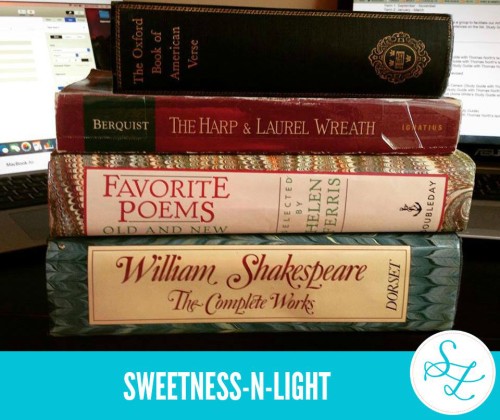
We have scads of poetry books on our shelves and for the earlier grades and up through middle school we tend to rely heavily on the Poetry for Young People series.
This is an extensive series of poetry books geared towards a wide age range with excellent illustrations and selections of poems from all your favorite poets.
We are slowly adding to our homeschool library, and I would like to acquire a few more of our favorites before everyone heads off to college.
“There is no frigate like a book
To take us lands away
Nor any coursers like a page
Of prancing poetry.
This traverse may the poorest take
Without oppress of toll
How frugal is the chariot
That bears a human soul!” ~Emily Dickinson
What’s Inside Poetry for Young People
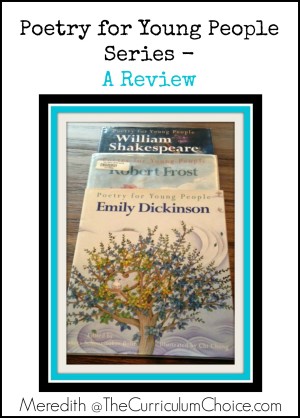
Each book in the series contains an introduction which tells about the poet’s life with some commentary on some of the poems contained within each text. These could easily be read in one sitting with elementary children and older. Or, alternatively, you could hand this to your middle school students and ask them to read it and narrate back to you about the poet.
The remainder of the books are filled with a generous helping of the poet’s work with delightful illustrations. As these are all separate books, the authors and illustrators that contributed to compiling the books are all different, so you gain many different perspectives on the poets and their poetry.
Books in the series that we have enjoyed thus far:
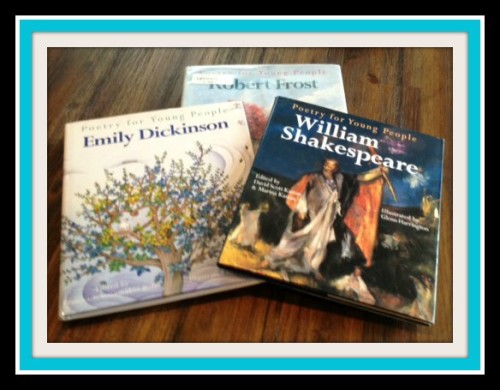
- Emily Dickinson
by Frances Schoonmaker Bolin, Illustrated by Chi Chung
- William Shakespeare
by David Scott Kastan & Marina Kastan, Illustrated by Glenn Harrington
- Robert Frost
by Gary D. Schmidt, Illustrated by Henri Soreson
- Lewis Carroll
by Edward Mendelson, Illustrated by Eric Copeland
- Walt Whitman
by Jonathan Levin, Illustrated by Jim Burke
- William Butler Yeats
by Jonathan Allison, Illustrated by Glenn Harrington
- William Blake
by John Maynard, Illustrated by Alessandra Cimatoribus
- Animal Poems
by John Hollander, Illustrated by Simona Mulazzani
As you can see, there are so many from which to choose, and this isn’t even the whole series. We read from these delightful books most mornings as part of our beloved Morning Basket Time. It’s a wonderful way to incorporate a love of poetry and the beauty of words and this great series makes it super easy. I hope you’ll try a few and see what you think.
Do you like to read poetry with your children?
More Poetry Resources
The Beauty of Combining Poetry – “I believe poetry paints beautiful pictures. Poems are descriptive. Emotional. Word art for the ears. But if your student isn’t an auditory learner, poetry can be heavy, confusing, and just a bunch of jumbled metaphors. This is why I believe it’s wise to start combining poetry and art in your homeschool!”
Poetry in Your Nature Journal – “Whether you actually write a poem or just play with words in your journal, I encourage you to give it a try. Start with a simple sketch and then perhaps a word or two to express your feelings about the subject. Remember that a journal is a personal expression for you and your child….no need for perfection.”
Design a Poetry Unit with Read and Understand Poetry – My sixth grader has been creating a poetry notebook, using Evan-Moor’s Read & Understand Poetry as the guide. Since we don’t use very many “workbook” curriculum pieces in our homeschool, we are pulling bits and pieces from this book and creating our own unit. It’s working quite well!
A Child’s Introduction to Poetry – This book will provide you with poetry study, not just for one year but for many years because there is just so much in it to discuss and learn.
The Poetry Homeschool – Throughout the ages people have sung, recited, or read poetry. Poetry seems to have always been a vital aspect of human life, and as homeschoolers we have the opportunity to introduce it to our children in such a way that they will enjoy and be inspired by it for the rest of their lives. The authors at The Curriculum Choice share their favorite poems and poetry resources so that your family, too, can enjoy poetry as you homeschool. We share with you the poetry homeschool.
~ Originally published February 2016, written by Meredith Henning
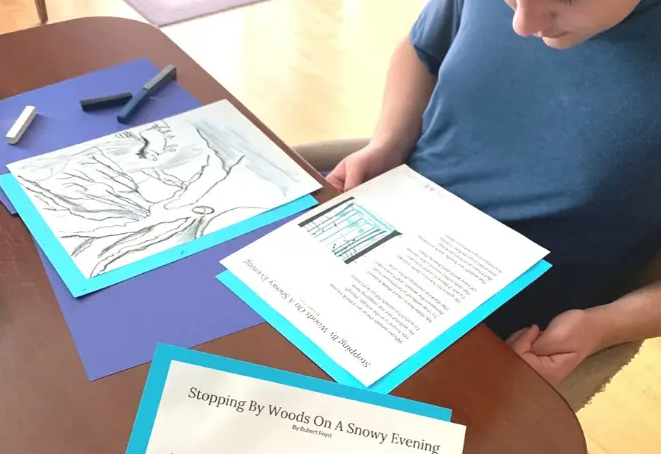

Leave a Reply